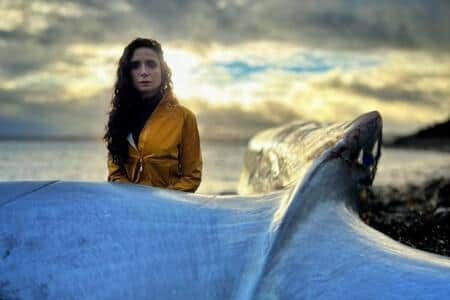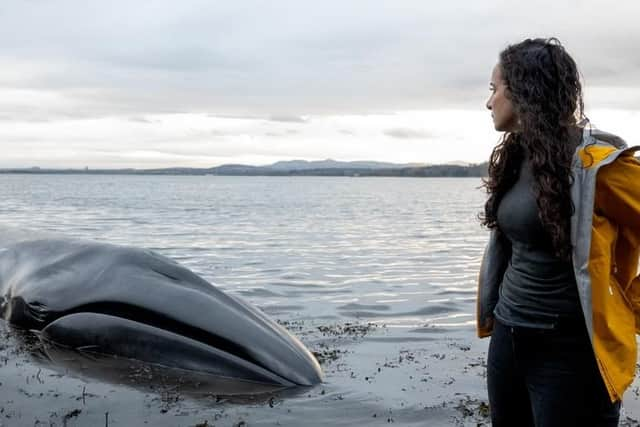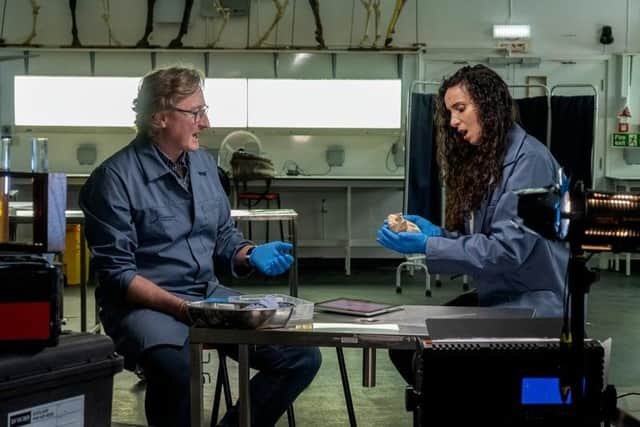Gory marine whodunit probes mystery of giant whale death in Firth of Forth
But all was not well.
The 12m-long animal, a young sei whale, had strayed far from its usual territory and into the Firth of Forth, where it was displaying worrying behaviour.
Sadly, despite a major emergency response and massive efforts to keep it afloat, the youngster ran aground and eventually died on the shore near Dalgety Bay in Fife.
Advertisement
Hide AdAdvertisement
Hide AdCue, the men and women in white coats – or more accurately oilskins and waders, armed with giant knives.
And so began an ocean whodunit.
A new hard-hitting and “very different” documentary, airing tonight, follows scientists as they examine the Forth whale and other cetaceans which have died around the UK and attempt to piece together the causes of their demise.
The 1.5-hour film is more Scandi noir than natural history show, a real-life detective drama.
READ MORE: Whales and dolphins stop eating to escape man-made underwater noise, Scottish-led research reveals
Presenter Ella Al-Shamahi, an explorer, paleoanthropologist and evolutionary biologist, gets her hands dirty as part of the necropsy team at Burntisland – up to their elbows in blood, guts and blubber in a race against time to extract all the clues before the carcass decomposes too far.
Footage is at times disturbing, even gruesome, capturing graphic but informative post-mortem procedures.
Who knew a sei whale’s entrails would measure 70m long when stretched out?


Explanations and insights are provided by the country’s leading experts, including Dr Andrew Brownlow, head of the Scottish Marine Animal Stranding Scheme, who leads the dissection.
Another Scottish fatality is featured – Lulu, from the UK’s only resident orca pod, found dead on Tiree in 2016.
Advertisement
Hide AdAdvertisement
Hide AdSince 1990, a staggering 12,000 whales, dolphins and porpoises have been found dead around the UK.


The figures have been rising in recent years and Al-Shamahi is on a mission to find out who or what is to blame.
“Sei whales are one of the largest and fastest whales in the world’s oceans,” she said.
“This was a significant beaching.
“The whale was far from where it should have been.
“They usually travel in groups in deep water but here was this one, solo, 100s of miles from known migration routes.
“It wasn’t supposed to be there, outside Edinburgh, in the shadow of the Forth Bridge.


“It was an arresting scene – emotional.
“We decided to make it the focal point for the film.”
The necropsy was a first for the presenter, who is more used to specimens that have been extinct for millennia.
“I usually work with bones so it was strange to have so much flesh and blood,” she said.
“We know there have always been beachings, but there has been a significant uptick.
Advertisement
Hide AdAdvertisement
Hide Ad“It’s not normal – something is going on, and that’s what we wanted to find out.”
She warns the documentary is not for the faint-hearted and the results are “deeply uncomfortable”.
“Viewers will never have seen a natural history show like this before,” she said.
“Nothing is sugar-coated.
“The footage and situation speak for themselves.”
What Killed the Whale?, made by STV Studios, airs tonight at 9pm on Channel 4 and will be available for catch-up on All 4.
Comments
Want to join the conversation? Please or to comment on this article.
